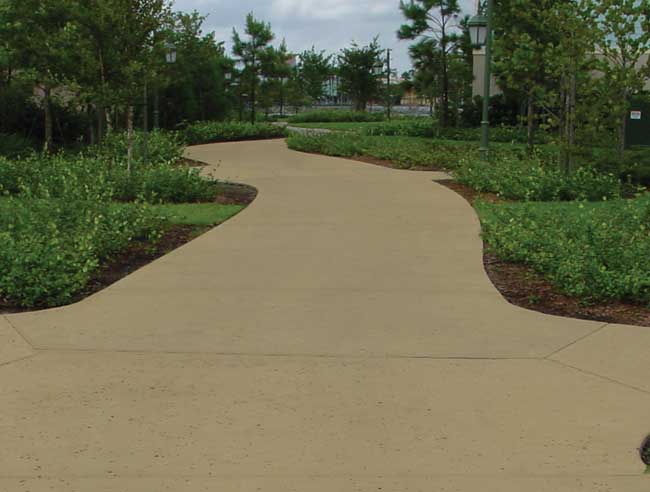So, you’ve decided to be industrious and do your own concrete work. You’ve done some research on what tools to buy, how much concrete you need and even scheduled a day off from work to bust out this project. Your friends and neighbors have chimed in with a mountain of tips and even offered up some helping hands. You’re ready to get rolling so you can have that patio you’ve always wanted for barbeques and entertaining friends. But wait—when can you actually use it? How long does it need to dry? Does climate affect it? These questions do need to be addressed before starting any concrete work in order to avoid problems.
Curing vs. Drying
Individuals who do not typically work in the concrete industry believe that once concrete feels dry it is ready for general use. This common mistake happens all too often, and unfortunately ruins a surface and its durability. Concrete can feel dry to the touch within hours of being poured, depending on the climate and time of year. However, concrete needs to do far more than just dry. For all poured concrete, big or small, a curing period is necessary to ensure strength and durability that will last over time and through inclement weather conditions.
So how long do you need to wait to get those patio parties rolling? Here are several factors that play into that answer:
- Mixture proportions
- Requested strength of concrete
- Size and shape
- Weather conditions
- Future weather exposure
With these factors in mind, the minimum curing recommendation is seven days—provided that the temperature is over 40 degrees Fahrenheit. Compressive strengths of concrete mixtures can vary and each one requires a different curing period so a good rule of thumb is to wait between 7–14 days.
What is the Process?
Do additional steps need to be taken during the hardening period? Indeed they do! Maintaining moisture while curing is key to the overall concrete strength and durability. You can leave the forms used to shape and hold the concrete in place to aid in moisture retention. You should also pay close attention to when and how additional moisture should be applied. If you pour your own small concrete projects at a residential site, a misting nozzle or some type of light spraying can help retain moisture. However, enough hardening must also be present to avoid surface damage. It is also recommended that water temperature be no more than 20 degrees cooler than the concrete itself, to eliminate chances of cracking—those pesky cracks! Some use large sheets of plastic to cover the concrete to discourage moisture loss. When used these sheets must be consistently saturated with water and can only be applied after the hardening stage is settled enough to avoid surface damage.
Temperature and Climate
Temperature and climate recommendations can vary and may need to be altered, depending on climate conditions in your area. Each climate has moisture variations that range from extra dry to very moist. Colder conditions can affect your concrete plan and the rate in which the curing takes place. The colder the conditions, the slower the cure rate. Curing agents and insulated blankets can be used when pouring concrete in less than ideal conditions. However, keeping the temperature regulated can be a tricky job. On the flip side, pouring concrete in extreme heat comes with its own set of risks; certain precautions must be taken to avoid rapid moisture loss. Wetting or spraying down the area before pouring concrete is recommended because it will aid in the curing process and help keep moisture from absorbing into the ground area. Once the concrete has been placed, it must be kept wet so it won’t dry out too quickly. Evaporation retardants are available for these circumstances and can certainly be of benefit when needed.
A Trial Run
For a project to look professional and hold up over time, knowing the curing process before pouring your concrete is a must. It may be a good idea to do a trial run on a very small mock area just to get some practice. You can familiarize yourself with the tools and the curing process—and how your climate will play a role in moisture retention. It might be extra effort on your part but can certainly make or break the outcome of your concrete experience


